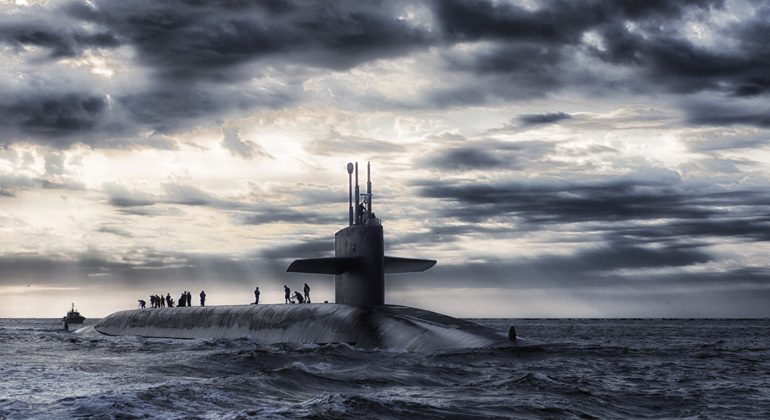British attachment to nuclear submarines drives bias towards nuclear power
As Hinkley C is given the green light, research published today by the Science Policy Research Unit at the University of Sussex, shows how intense British Government attachments to nuclear submarines help drive a strong bias in UK energy policy in favour of nuclear power.
This is despite nuclear power being recognised in the Government’s own detailed analyses to be expensive and otherwise “unattractive” compared to other low carbon options.
The report ‘Understanding the Intensity of UK Policy Commitments to Nuclear Power’ documents strongly-held views in UK defence policy, that nuclear-propelled submarines form a crucial military capability. Yet these are arguably the most complex engineered artefacts in the world, not easy for a country with a declining manufacturing base to build and maintain.
“On the military side, we found strong fears that without continued commitment to civil nuclear power, the UK would be unable to sustain the industrial capabilities necessary to build nuclear submarines,” said report co-author Dr Phil Johnstone.
“We systematically examined a range of different possible reasons for official UK attachments to nuclear power”, said report co-author Emily Cox. “None of these are satisfactory to explain the intensity of support for nuclear power maintained by a variety of UK Governments. It seems that pressures to continue to build nuclear submarines form a crucial missing piece in the jigsaw.”
“The Government’s own data shows the UK to be blessed with abundant, secure and competitive renewable energy resources”, said report co-author Professor Andy Stirling, “in a world turning much more to renewables than nuclear power, Britain might be expected to be taking a lead in these new technologies”.
Yet a greater priority in UK policy making appears to lie in maintaining ‘nuclear submarine capabilities’. Parliamentary Select Committee Reports and many other policy documents on the military side reveal intense pressures for strong Government support for skills and training, design and manufacturing and research and regulatory capabilities linking with the civil nuclear industry.
The report shows that these military pressures reached a peak in the crucial period 2003-2006 – with many new policy measures following on since then spanning civil and military sectors. During that same period, UK energy policy underwent a dramatic U-turn that has remained unexplained until now – from a view of nuclear power as “unattractive”, to a commitment to a “nuclear renaissance”.
“What this research suggests”, said report co-author Dr Phil Johnstone, “is that British low carbon energy strategies are more expensive than they need to be, in order to maintain UK military nuclear infrastructures. And without assuming the continuation of an extremely expensive UK civil nuclear industry, it is possible that the costs of Trident would be significantly greater.”
The report illuminates many important cross-overs between UK submarine and civil nuclear supply chains. One defence policy document even considers the possibility to ‘mask’ some of the costs of nuclear submarine capabilities, behind spending on civil nuclear power.
“What is remarkable about this pressure for a nuclear bias”, continued Professor Stirling, “is that it is well documented on the military side, yet remains completely unacknowledged anywhere in official UK energy policy documentation. This raises serious questions about the transparency and accountability of decision making in this area – and the quality of British democracy in this regard”.








